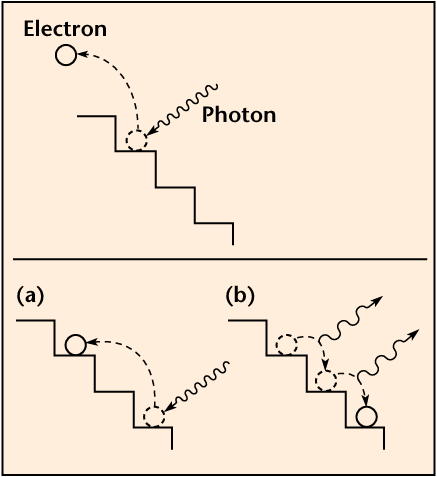Particles and Anti-Particles
Every particle has an anti-particle. This mysterious "anti-particle" has the same rest mass and opposite charge as the "particle". For example, the antiparticle of the negatively charged electron is the positively charged electron, or the positron.Annihilation and Pair production
These particles and anti-particles can meet each other and annihilate one another. in this example, a proton and an anti-proton meet each other and annihilate, producing high energy gamma rays in the form of photons. Rest mass, charge, momentum and energy are conserved.
in this example, a proton and an anti-proton meet each other and annihilate, producing high energy gamma rays in the form of photons. Rest mass, charge, momentum and energy are conserved.They can also be produced from a high energy photon, this is called pair production.
 in this example, a high energy photon interacts with a nucleus to produce an electron and an anti-electron. Note energy and momentum are conserved.
in this example, a high energy photon interacts with a nucleus to produce an electron and an anti-electron. Note energy and momentum are conserved.


